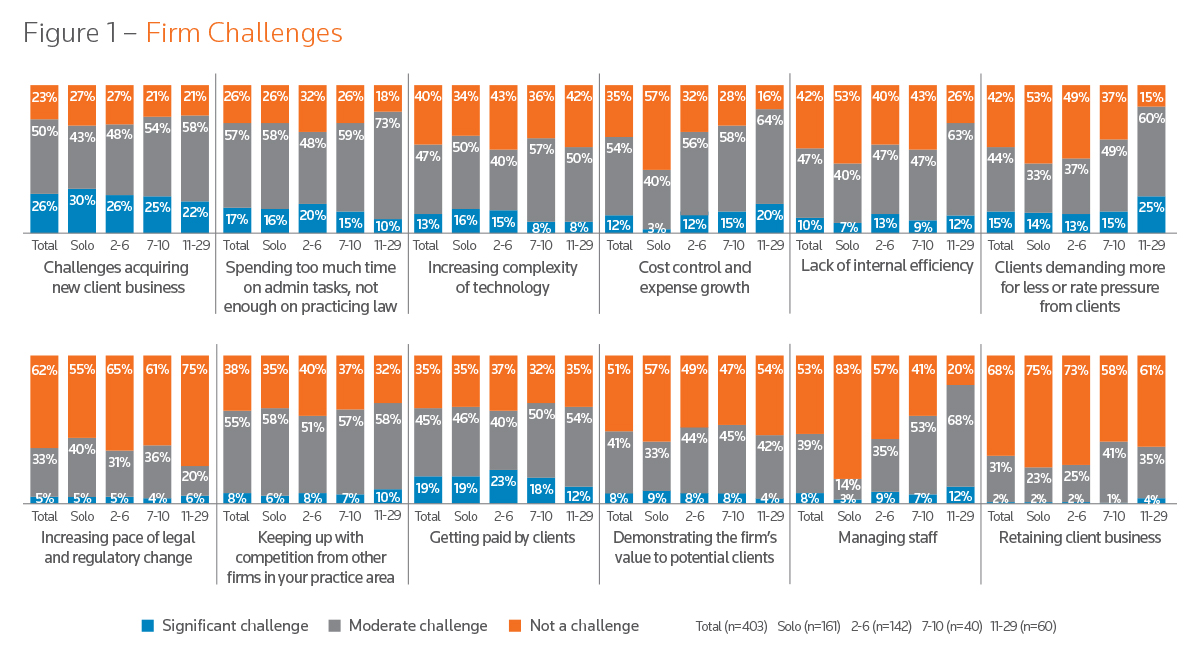2020 Highlights: Strategies Small Law Firms Are Using to Overcome Challenges

With the year winding down, Legal Current is revisiting 2020 milestones and key accomplishments from the Legal business of Thomson Reuters. Today we look at the challenges facing small law firms and the Thomson Reuters 2020 State of U.S. Small Law Firms report, which highlighted some of the strategies firms are using to overcome them.
The report explored the pressures facing small law firms – such as acquiring new clients and spending too much time on administrative tasks – as well as the advantages firms may experience by being early adopters of innovative delivery models and productivity-enhancing technologies.
“Small firm lawyers have unique challenges, as they are oftentimes not only lawyers but also small business owners and managers in running their practices,” said Mark Haddad, general manager of the Small Law Firm business for Thomson Reuters. “Juggling those roles reduces the amount of time spent practicing law. At the same time, the lack of action by many firms in addressing those challenges means opportunities for competing firms to gain ‘first mover’ advantage by streamlining processes and adopting new technologies to improve efficiency.”
The report found 95 percent of small firms consider themselves “successful” or “very successful,” yet 76 percent say that acquiring new client business is a significant or moderate challenge, while 74 percent say the same about spending too much time on administrative tasks instead of practicing law. The study found that small firm lawyers, on average, spend only 60 percent of their time doing client work.
Despite these challenges, only 29 percent of firms have implemented plans to address client acquisition, and only 20 percent have implemented plans to reduce their administrative workload.
As Attorney at Work’s Joan Feldman noted in coverage of the findings, “Despite facing many of the same challenges one year to the next, most small law firms have yet to take meaningful action to deal with the problem.” She added: “Because of a general lack of action, there is a real opportunity for those firms willing to make the first move. While some small law firms have already taken a leading role to innovate their service delivery models, there remains ample fertile ground for other firms to implement similar changes, whether by improving business development acumen, creating optimal internal efficiencies for managing their law firms, or adopting technology to streamline their practice.”
Haddad discussed some of these opportunities in a podcast earlier this year, and noted how small firms willing to embrace and invest in technology are best positioned to make the most of the current situation.
For more insights, listen to Haddad’s podcast and download the 2020 State of U.S. Small Law Firms report.